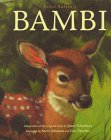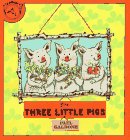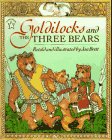About Zheljko Stanimirovic...
Zheljko Stanimirovic graduated in 1998 from five-year Biology College of Belgrade University in Yugoslavia. He majored in Animal Systematics and Ecology with a thesis "Diagnosis of bird community in Banjicka Forest in Belgrade". His teaching experiences are in Middle School Biology (grades 5-8). Zheljko is active in several national and local environmental societies, and often posts on the Teachers.Net boards. You can visit his site at www.expage.com/zheljko
Related Books

Bambi
by Janet Schulman, Felix Salten, Steve Johnson (Illustrator), Lou Fancher (Illustrator)

Red Riding Hood
by James Marshall

The Three Little Pigs
by Paul Galdone

Goldilocks and the Three Bears
by Jan Brett

Owl Babies
by Martin Waddell, Patrick Benson (Illustrator)

From Acorn to Oak Tree (How Things Grow)
by Jan Kottke

The Wind in the Willows
by Kenneth Grahame, Michael Hague (Illustrator)
|
 Teacher Feature...
Teacher Feature...
"OH DEER!" Game
by Zheljko Stanimirovic
A lesson in environmental education which helps children understand the interdependence of animal life with their environment.
Activities and Procedures:
- Describe the fundamental necessities of animals:
- food
- water
- shelter and space in a suitable arrangement
- Demonstrate to students that without these essential components, animals cannot survive. Do this by playing Oh Deer!
- Have students count off in fours, with all those sharing the same number gathering in certain corners of the classroom. (This game is best played outdoors but may be adapted to inside play.)
- Mark off two parallel lines on the playground or floor that are about ten to twenty yards apart.
- Have all the "ones" behind one line and all the rest behind the other line. The "ones" will become the deer.
- The other students will become the components of habitat:
- food
- water
- shelter and space
- When a deer is looking for food, it should clamp its hands over its stomach. When it's looking for water, it puts its hands over its mouth. When it is looking for shelter, it holds its hands together over its head. When it is looking for space, it should hold its arms straight out at its sides. A deer can choose to look for any of these needs during each round, but it cannot change what it is looking for in that round. It can change in the next round if it survives.
- The students who are the components of habitat may choose which they will be at the beginning of each round. They will depict that component in the same manner as the deer.
- The game starts with all players lined up on their respective lines and with their backs to the students at the other side. The teacher asks all students to pick their sign. When they are ready, count: "One...two...three." At the count of three, the students turn and face each other showing their signs.
- The deer run to the habitat component they are looking for and take that component back to the deer side of the line. (This represents the deer's successfully meeting its needs and reproducing as a result.) Any deer that fails to find the component it was seeking dies and becomes part of the habitat, joining the students on the habitat side.
- The teacher keeps track of the number of deer at the beginning and ending of each round. Continue play for fifteen rounds.
- At the end of fifteen rounds discuss the activity; encouraging the students to talk about what they experienced and saw. The herd grows in the beginning, then some must die as the habitat is depleted. This fluctuation is a natural process unless factors which limit population become excessive.
- Discuss what excessive limiting factors are: drought, fires, deforestation, uncontrolled hunting.
- The teacher should make a line graph of the number of deer alive at the end of each round to show that it is naturally cyclical.
- Have the students summarize what they have learned from the activity.
- If the game is played again, be sure to include the limiting factors. For example, if their is a drought no student on the habitat side can choose water as their symbol.
- A new graph can be made to show the difference made in the natural cycles.
Tying It All Together:
When students have played the Oh Deer! game it helps them to understand the interdependence of animals on their environment. Hopefully, they will see that as human beings they can be a part of the limiting factors which effect our environment. With this knowledge they may become more responsible in taking care of our ecological systems.
|
|

